Sorry I'm not familiar with Python, but there's a general method that works, assuming you can manually interrupt execution at a random time.
Just do so, and display the call stack. It will tell you, with high probability, what you want to know. If you want to be more certain, just do it several times.
It works because the guilty caller has to be on the call stack for the fraction of time that's being wasted, which exposes it to your interrupts for that much of the time, whether it is spread over many short calls or a few lengthy ones.
NOTE: This process is more like diagnosis than measurement. Suppose that bad call is wasting 90% of the time. Then each time you halt it, the probability is 90% that the bad call statement is right there on the call stack for you to see, and you will be able to see that it's bad. However, if you want to exactly measure the wastage, that's a different problem. For that, you will need a lot more samples, to see what % of them contain that call. Or alternatively, just fix the guilty call, clock the speedup, and that will tell you exactly what the wastage was.
